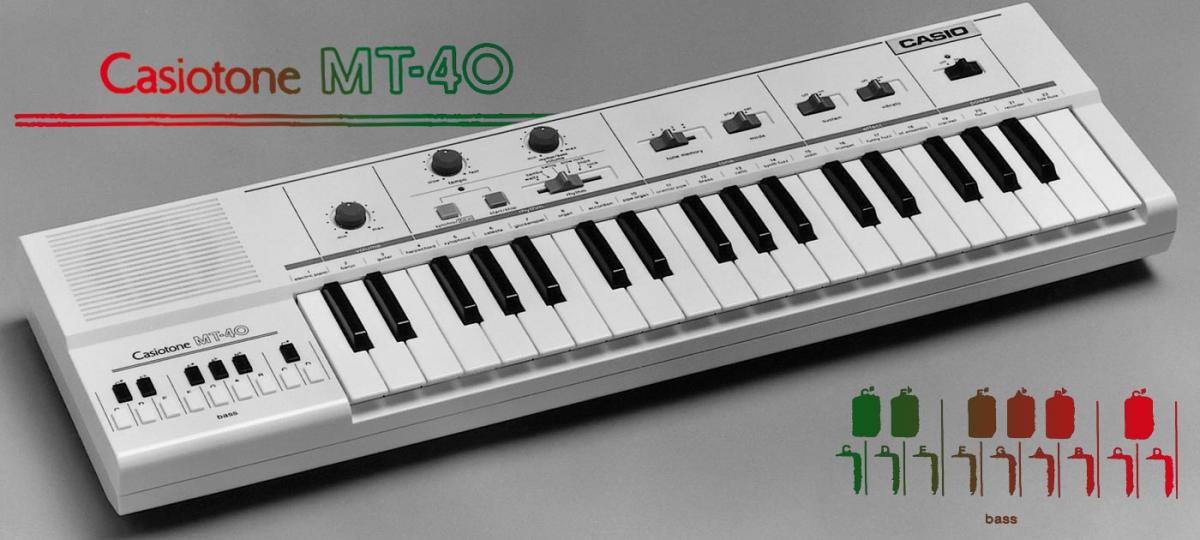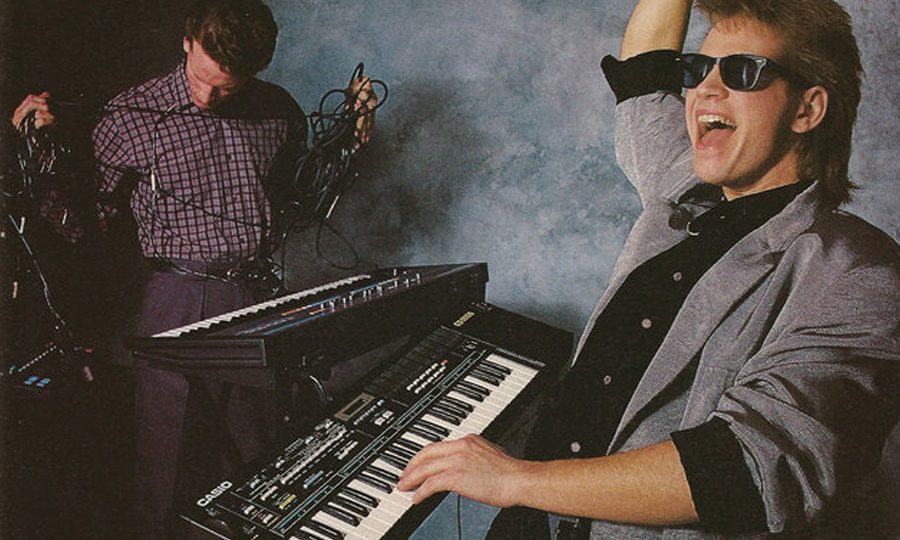Casio: Domestic Music Gear that Inspired a Generation
Often dismissed as cheap and gimmicky, Casio’s influence on the music world is far greater than it gets credit for. While its sounds may not feature abundantly in chart-topping hits, it’s no secret that Casio instruments have played a crucial role in the musical lineage of many a hit maker.
In this post, we celebrate this unassuming yet important brand by highlighting five of its most iconic and influential products.
1. Casio VL-1 (1981)

This unassuming pocket sized Casio is where it all started. Heralded as the first affordable domestic synth, launched in 1981, it introduced millions to the joys of an electronic instrument. And while extremely basic by todays standards it did offer some basic sequencing control, 5 preset voices, rhythmic accompaniment and wait for it…. a calculator. I’m not sure if your local comprehensive school would approve of you taking this in to your Maths O level exam though.
While the sonic output is crude to say the least it did show up on a few pop hits of the day, most notably it formed the rhythmic accompaniment to the 1981 hit “Da Da Da” by Trio.
2. Casio SK-1 (1986)

Selling over 1 million units (One of those units to yours truly) the SK-1 was nothing short of revolutionary when it launched in 1986. The SK-1 was the first product to incorporate sampling, a technique that up until then was reserved for devices costing many thousands of pounds.
While Its sampling function was crude and generally used for comedic effect i.e recording the dog barking or fart noises, it did introduce the idea of sound sampling to a generation. The timing of it’s release coincided with the very dawn of sampling in music, most famously within the Hip-Hop genre. Later models in the SK range would introduce more sample time and features such as drum pads enabling slightly more in the way of creative musical expression.
The overwhelming legacy of the SK samplers lies in the sheer amount of Hip-Hop and Dance Music producers that list it as their entry into the world of sampling.
If you want to step back to the 80s and experience the joy of the SK-1 for yourself from the comport of your DAW check out this great virtual version: https://www.dixonbeats.com/collections/vst-plugins/products/db1-vst-plugin
3. Casio MT-40 (1981)

The somewhat bigger brother to the Casio VL-1, the MT-40 offered a slightly more accessible and playable experience for budding musicians wanting to embrace the new. With mini keys and a larger more sturdy construction the MT-40 provided 8 notes of polyphony plus dedicated bass keys (or rather buttons) enabling players to recreate anything from Mozart to Bowie all in glorious plinky-plonky fashion.
But the thing that places this unit at number 3 on our list is it’s iconic status as the blueprint to dancehall reggae. In 1985 the reggae world got turned on its head with the release of a riddim that was like nothing that went before it. Enter “Under mi Sleng Teng” by Wayne Smith. The bass heavy futurist sound that has become known as the Sleng Teng riddim is in fact nothing more that a MT-40s rhythm and bass preset called Rock. This riddim has gone on to feature in over 500 covers and marks the birth of the electronic reggae sound.
For the full lowdown on the Sleg Teng riddim and other interesting sample origin stories check out this post
4. Casio RZ-1 (1986)

Launched in the same year as the SK-1 the RZ-1 was designed for musicians on a budget rather than the domestic mass market. Drum machines had already established themselves by the mid 80s but the RZ-1 was one of the first to allow you to sample your own drum sounds—as long as those drum sounds were incredibly short. That’s because the RZ-1 only offered a total of 0.8 seconds of sample time. That’s TOTAL! If you wanted to load up all 4 custom sample pads you were looking at an eye watering 0.2 seconds per pad.
While this sounds ludicrously basic the RZ-1 is behind possibly one of the most important and influential sample based albums of all time—3 feet high and rising by De La Soul. Prince Paul who produced the album used the drum machine to compose the drum tracks that would underline the wildly eclectic sample loops used in this sampling masterclass of a record. Another notable Hip-Hop producer that started out using a RZ-1 is none other than Wu-Tang Clan beatsmith RZA. This alone warrants it’s inclusion on our list.
5. Casio Rap1 – Rapman (1991)

Finally a fun little addition to our list but none the less quite an original little device. The Casio Rapman or Rap1 claims to be The Worlds First Rap keyboard—And quite possibly last. Launched in 1991 this was certainly not aimed at the serious musician and was somewhat of a gimmick cashing in on the popularity of rap music.
As well as the standard array of cheap and fairly nasty instrument and rhythm tones the Rap1 featured both a faux turntable platter and a voice changing mic. While the scratch pad looks like an early predecessor to the DJ controllers of today, this tool offered pretty limited sonic manipulation over 4 preset scratch fx. The inbuilt mic on the other hand was fairly innovative offering early pitch shifting. This allowed you to rap along in low frequency robotic tones or high pitched Chipmunk vocals.
The main thing about the Rapman is it’s a lot of fun to use allowing you to become MC Hammer in the comfort of your own bedroom. Some of the sound effects have shown up on various recordings with some lo-fi producers championing it as a great addition to your lo-fi hardware tool kit.
Remember – RouteNote Create subscriptions start from as little as $2.99. You also get 10 FREE credits to spend on samples along with access to our FREE sample pack bundle when you sign-up!
